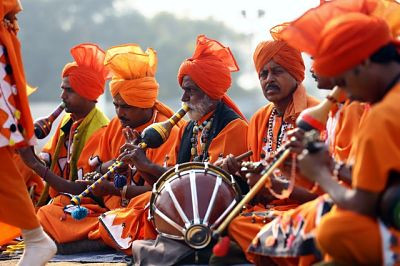How Can I Make a Good Impression in India?
Travelling to India for business and want to make make a good impression?
Then you need to learn a bit about the people, their beliefs, manners and, of course, their culture!
India is an incredibly diverse country with regional, ethnic, linguistic, religious and cultural influences, meaning that manners, etiquette and taboos may change a little depending on where you are in the country.
Despite the diversity of Indian culture, we’ve prepared some broad tips to help you make a good impression wherever you are in the country.
If you’re ever unsure, however, of the etiquette, then the simplest thing is to ask. Indians tend to be really helpful and will no doubt give you the guidance needed.
DON'T MISS THE FREE GUIDE TO INDIAN CULTURE AT THE END!
1. Understand Cleanliness in Indian culture.
Did you know that the right hand is used for ‘clean’ activities, whilst the left hand is used for ‘unclean’ activities, such as cleaning oneself after using the toilet?
This is the case in many Asian countries. As such, you should only take food, eat or pass things with your right hand. You may get odd looks if you use your left hand to put food into your mouth. If you are invited to an Indian’s home for food, you may find that utensils are not used to eat which makes cleanliness of vital importance.
Always wash your hands before eating or before serving food to others and avoid using your left hand when taking or distributing food.
You should also ensure that your nails are well-groomed and that your clothing is clean. Clean clothing also applies to socks.
Why? Because shoes are typically removed at the door of Indian homes, temples and mosques, meaning that your socks should be fresh, in good condition and not include patterns or images that might be considered offensive (wearing a pair of socks with images of dogs on them into a mosque, for example, would cause offense).
Many people travelling to India for business have been caught out by their socks – so don’t fall into this trap!
2. Learn to Interpret Body Language in Indian culture.
Did you know that the body language you use in your home culture may not translate the same way in India?
Innocuous gestures in your home country may be offensive in India. Although it’s good to keep an eye on this, if you say things in a nice way with a smile, then a potentially offensive gesture may not be perceived negatively.
Remember, that Indian people tend to be hospitable and they are unlikely to be offended for a gesture that is clearly not intended to offend.
As a general indication, it’s typically considered rude in Indian culture to beckon with your hand or snap your fingers. Instead, you should extend your arm and curl your fingers downward in a claw motion.
Alternatively, you might employ the Indian method of using your chin, thumb or entire hands to direct someone’s attention.
Rooted in religion, feet are considered the ‘dirtiest’ part of the body. You should never point the soles of your feet towards another person, a temple or a deity.
We said earlier that Indian people will generally be forgiving of innocent errors in body language etc. However, this is unlikely to apply when it comes to temples or deities. If, for example, you come across a status of Buddha and choose to sit on his head and rest your feet on his shoulders, then this will cause considerable upset. Likewise, taking a selfie, whilst you place your feet at the foot of a religious icon will also cause upset. Walking into a temple or mosque whilst wearing your shoes may also cause upset as you will be defiling sacred ground.
When you are in India, you will find that sitting on the floor is more common than in other cultures. To avoid pointing the hides the soles of your feet. The most common way is to kneel and tuck them under your bottom.
3. Appreciate the role of religion and spirituality in many parts of Indian culture.
Did you know that behaviours across most cultures are embedded in the historic religious practices of that country / culture?
In this respect, religion has played a critical role in influencing many areas of Indian culture. For example, Muslims do not eat pork or pork products (such as gelatine) and they tend to avoid alcohol. Hindus believe that cows have a sacred standing and do not, therefore, eat them and neither do they wear leather.
You should bear these influences in mind if you are hosting Indian colleagues or giving gifts. We suggest that you take the time to understand the religions most important in India, such as Buddhism, Hinduism, Sikhism and Islam as this will help you make a good impression and avoid offence.
It’s also worth noting that garlands have spiritual roots and are deeply rooted in Indian culture. They are often used to welcome guests to one’s home. If you attend a dinner, then you may find that your hosts place flower garlands around your neck. Although you can remove them after a few minutes, you should show your appreciation by holding them in your hands for a while.
4. Get to Grips with the way Face and Honour Work in Indian culture.
Did you know that many cultures place a high value on ‘face’ and honour? Causing a ‘loss of face’ can irreversibly damage relationships.
Reputation is highly valued and you should avoid any behaviour that causes embarrassment or shame. Behaviours considered innocuous in Western cultures, such as banter or challenging ideas, may actually cause your counterpart to ‘lose face’. If this happens, (particularly if done publicly), then your relationship may be irreversibly damaged.
You should always be sensitive to this cultural value and ensure that potential challenges are dealt with sensitively and in private and that you avoid becoming openly frustrated with someone or saying anything critical.
As such a strategic business market, India has tremendous international business opportunities.
This blog goes some way to helping you understand key parts of Indian culture that will help you make a good impression with your Indian counterparts.

If you REALLY want to make the best impression possible, then sign-up for our eLearning Indian Cultural Awareness online course.
You may also be interested in the following blogs:
- What can Google Search tell us about Indian Culture?
- Three best Netflix shows to help you understand Indian culture
- What is the negotiation style in India?
- Important cultural differences between Britain and India
Main Photo by Nishant Aneja from Pexels
By accepting you will be accessing a service provided by a third-party external to https://www.commisceo-global.com/

 +44 0330 027 0207 or +1 (818) 532-6908
+44 0330 027 0207 or +1 (818) 532-6908
